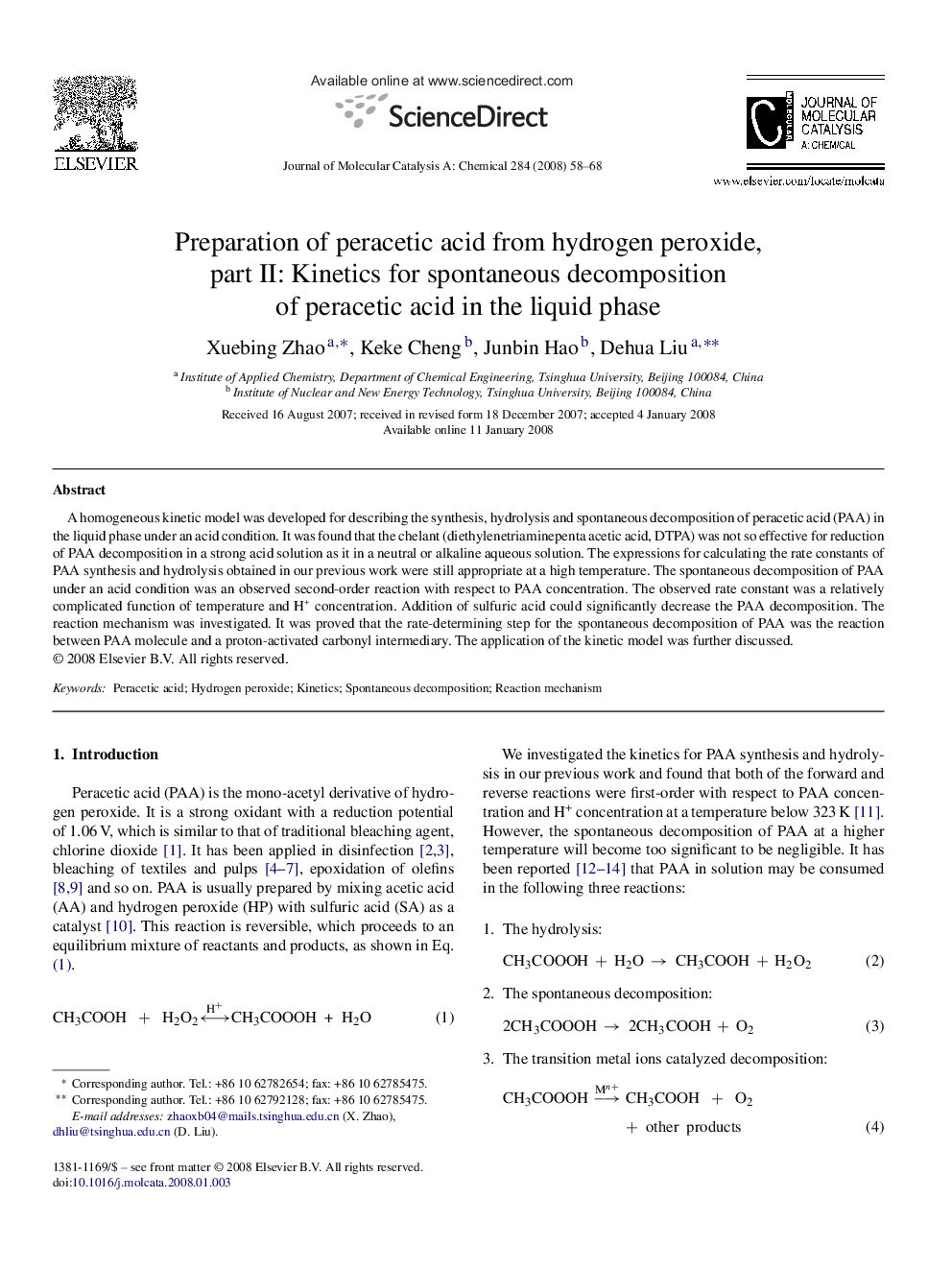| Article ID | Journal | Published Year | Pages | File Type |
|---|---|---|---|---|
| 67848 | Journal of Molecular Catalysis A: Chemical | 2008 | 11 Pages |
A homogeneous kinetic model was developed for describing the synthesis, hydrolysis and spontaneous decomposition of peracetic acid (PAA) in the liquid phase under an acid condition. It was found that the chelant (diethylenetriaminepenta acetic acid, DTPA) was not so effective for reduction of PAA decomposition in a strong acid solution as it in a neutral or alkaline aqueous solution. The expressions for calculating the rate constants of PAA synthesis and hydrolysis obtained in our previous work were still appropriate at a high temperature. The spontaneous decomposition of PAA under an acid condition was an observed second-order reaction with respect to PAA concentration. The observed rate constant was a relatively complicated function of temperature and H+ concentration. Addition of sulfuric acid could significantly decrease the PAA decomposition. The reaction mechanism was investigated. It was proved that the rate-determining step for the spontaneous decomposition of PAA was the reaction between PAA molecule and a proton-activated carbonyl intermediary. The application of the kinetic model was further discussed.
Graphical abstractA homogeneous kinetic model with consideration of the synthesis, hydrolysis and spontaneous decomposition of peracetic acid (PAA) in the liquid phase under an acid condition was developed. The reaction mechanism was investigated. It was proved that the rate-determining step for the spontaneous decomposition of PAA was the reaction between PAA molecule and a proton-activated carbonyl intermediary. Figure optionsDownload full-size imageDownload as PowerPoint slide
